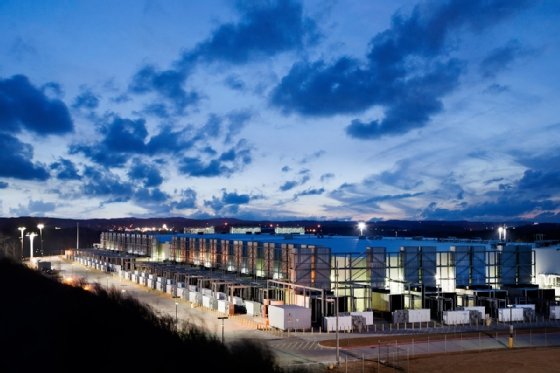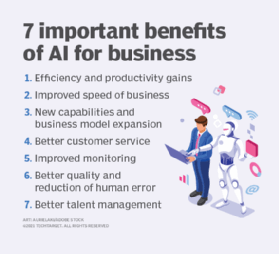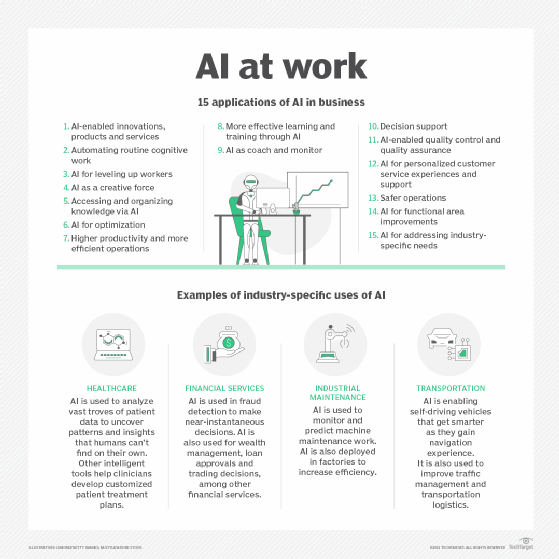
Nmedia - Fotolia
AI and climate change: The mixed impact of machine learning
AI can both help and hurt the environment. While companies use artificial intelligence to increase factory efficiency and lower energy costs, training AI demands a lot of energy.
Climate change is a pressing issue for people worldwide, but artificial intelligence could be the key to helping save our environment. AI is applying the power of machine learning to finding patterns in data that can help spot trends.
Some of AI's other functions around image and object recognition, conversational assistants and autonomous systems are also helping to shift the tide in the battle against climate change.
At the same time, AI's energy consumption is high. Data centers are critical for storing the large amounts of data needed to power AI systems, but demand a huge amount of energy. In addition, training advanced artificial intelligence systems, including deep learning models, can require high-powered GPUs to run for days at a time.
It's debatable, then, if using AI to help climate change can negate its high energy consumption and subsequently high carbon emissions.
Using AI to offset climate change
While AI is already creating positive environmental impacts around the world, organizations could do more. Businesses and organizations could share data and optimize their usage of environmental resources by creating opportunities to share what's working.
At the same time, AI could help ensure a more profitable system for businesses utilizing environmental resources. By using machine learning, systems can notice tiny changes in data, determine issues in real time and adapt to make sure that businesses minimize waste.

The opportunities for artificial intelligence to support our environment are not new. According to an Intel study from 2018, 74% of survey respondents were already in agreement that AI will help to solve long-term environmental challenges. Intel is also on board, having committed to restoring 100% of its global water use by 2025.
Microsoft's AI for Earth program, which launched in 2017, plans to distribute 200 research grants totaling $50 million to projects using AI to address environmental damage. With Microsoft's program, researchers are able to share information and data directly. Using research on the environment conducted around the world and compiled in an AI system, the goal is to combine the efforts of experts to fight climate change and prevent a sixth mass extinction, a potential worst-case scenario.
Researchers at the University of Alabama are working on an AI warning system that can detect and notify authorities of algal blooms that harm freshwater bodies all over the planet. This project is already planned to be deployed in space to monitor the planet with other technology in orbit. The Microsoft program is making this possible while AI is still young.

Additionally, AI and climate change are meeting each other in a field known as climate informatics. As explained by National Geographic, an AI program is able to learn and predict weather patterns that contributes to the study of large-scale climate changes across the planet. One AI tool has already generated 30 climate models, and the Intergovernmental Panel on Climate Change of the United Nations is currently utilizing those 30 climatological models.
Computers use AI-developed models of this sort to determine the extent and nature of climate changes in specific areas of the globe. Climate science and informatics experts find that by cross-referencing multiple AI models and predictions, they can accurately determine the short-term impacts of climate change. Unfortunately, different AI models will disagree on long-term predictions. The farther into the future a change could take place, the less reliably any individual model could predict such distant events.
Minimizing the margin of error for such environmental predictive technology would be an important improvement for future research. Storm researchers have AI tools that provide up to 99% accuracy in predicting complex weather patterns like tropical cyclones, weather fronts and atmospheric rivers. Atmospheric rivers are extraordinarily difficult for humans to track or predict without AI assistance.
There are a number of ways organizations can use this information to lessen environmental impacts. According to an article published by Columbia University's Earth Institute, farmers in India use AI-enabled systems to get 30% higher crop yields of groundnuts.
The AI-enabled system can help the farmers to prepare a map of the land to determine the optimal times for applying fertilizer to specific parts of the farmland and ideal dates for planting.
According to the same article, Norway has used AI to help grow its use of renewable energy as part of an automated electrical grid. The AI-based system can determine when best to utilize renewable energy sources to optimize the system's sustainability while simultaneously preventing power outages.
If people around the world had autonomous electrical systems and highly skilled AI predicting the best use of the environmental resources for farming, production rates would increase and consumption rates would decrease at the same time. Obviously, integrating such complicated AI programs across the planet is a significant undertaking, but these programs already seeing success.

High carbon emissions of AI
The 2018 World Economic Forum report showed that while AI can address some of Earth's environmental challenges, it is important to manage it properly. According to the forum and experts in the field, AI has the potential to accelerate environmental degradation. The use of power-intensive GPUs to run machine learning training has already been cited as contributing to increased CO2 emissions.
To prevent this, the World Economic Forum proposed that governments and companies should pursue advancements in "safe" AI to ensure that humanity is not developing AI that is harmful to the environment. Specifically, the World Economic Forum said in its report that AI developers "must incorporate the health of the natural environment as a fundamental dimension."
This means safeguarding against models that will demand the consumption of energy or natural resources beyond what is sustainable, among other factors. All programs need to be designed with the dimension of environmental protection and improvement in mind.
In the future development of AI programs, it will also be important to note the environmental impact of creating these systems in the first place. According to an academic study on energy usage for deep learning processes, the creation of an effective AI might be costly to the environment. Nearly 300,000 kilograms of carbon dioxide equivalent emissions are created during the process of training a single model. This is equal to the emissions of five average cars in the United States.
Considering the negative environmental impact and the positive implications of AI and climate change will be crucial moving forward.





